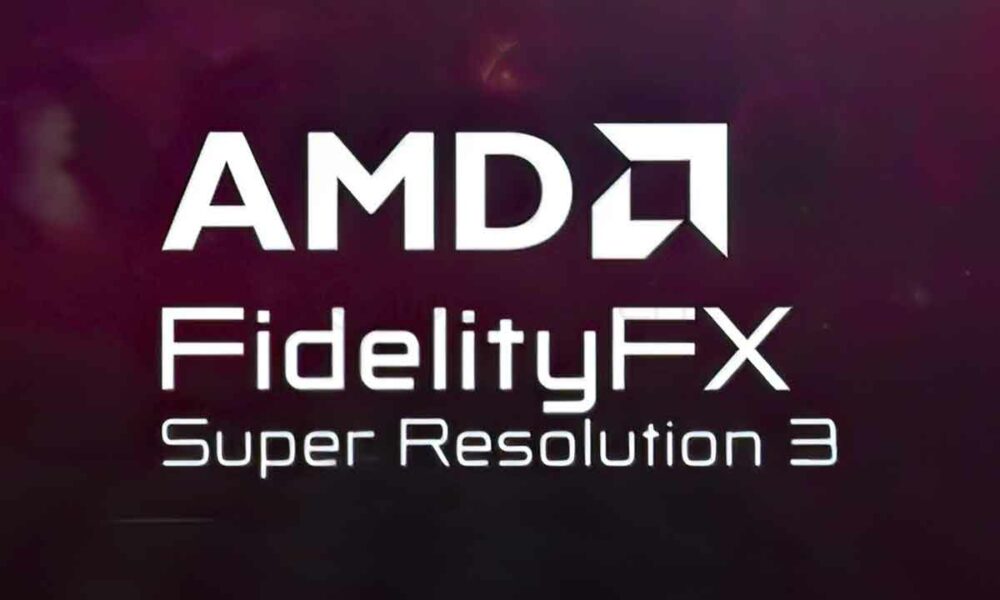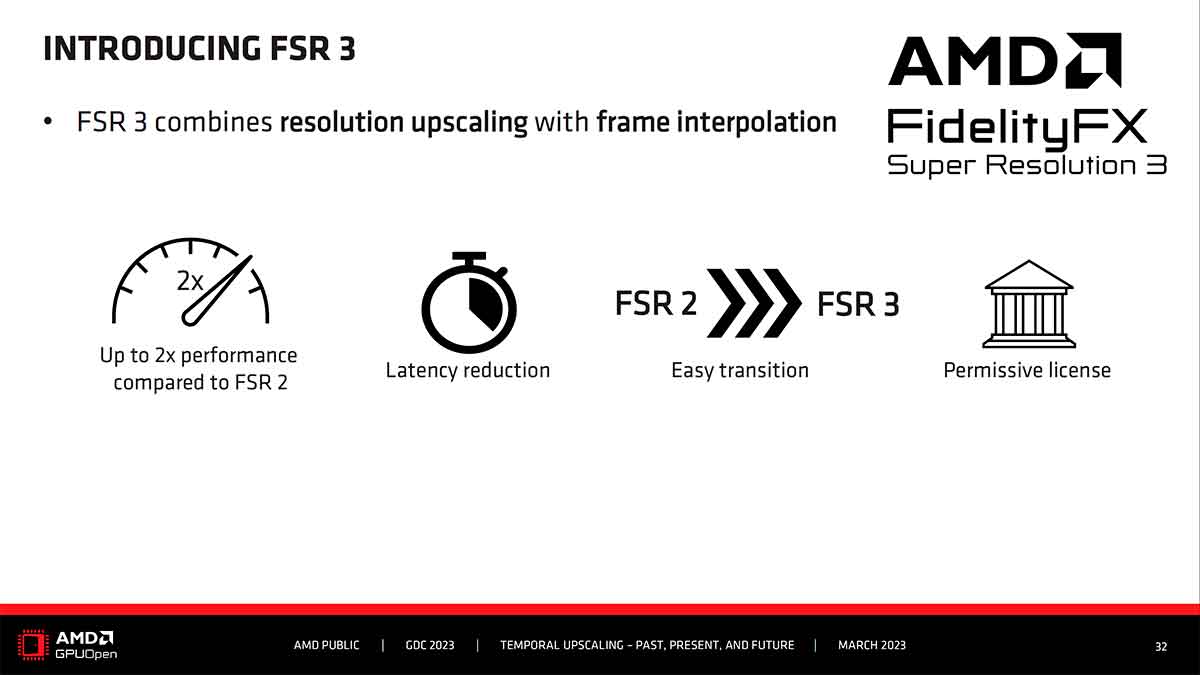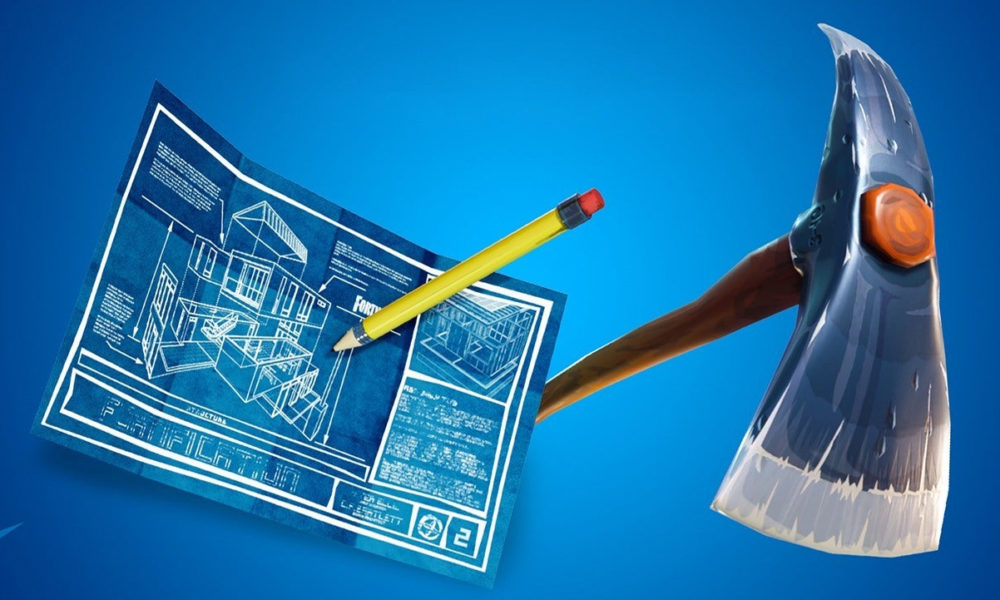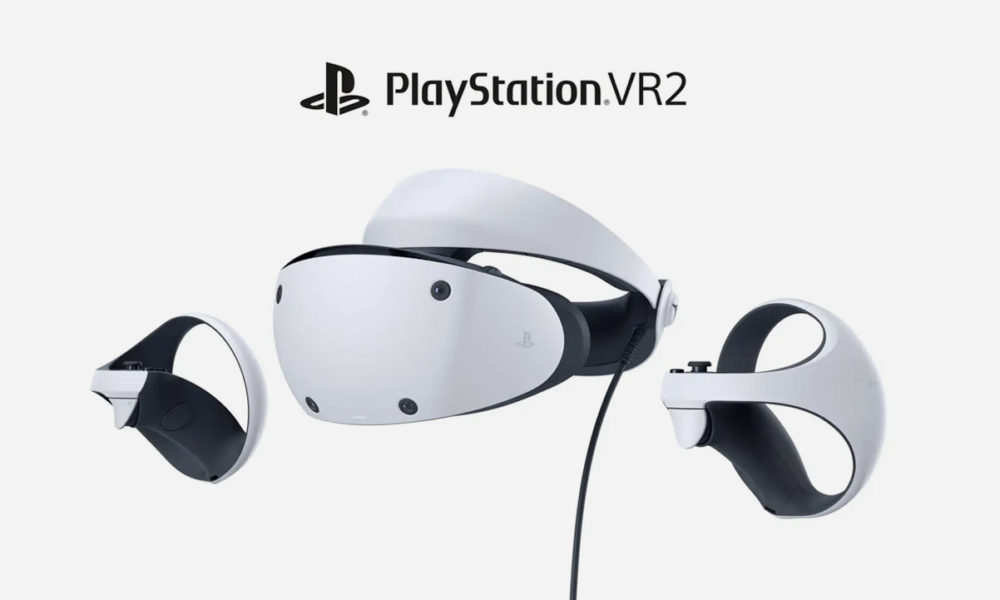
Just as we expected AMD has taken advantage of GDC 2023 to reveal more information about FSR 3, its upscaling technology with which the company intends to replicate NVIDIA’s DLSS, although with the main difference that AMD publishes it with an MIT license, much more permissive and open than NVIDIA’s proposal. Let’s remember that the currently available version is FSR 2.2, published in November of last year, and which aims to be the last one before the generational leap.
AMD tThe date chosen for the release of FSR 3 has not yet been revealed, although its debut is expected to take place throughout the second quarter of this year, so it should not take too long for us to have more information in this regard. Now, the company has indeed revealed some of its most interesting news and, although we will still have to wait to see the result, the proposal on paper seems most interesting.
The most remarkable thing is that AMD targets frame interpolation, a technology that we have already seen in DLSS 3 with the generation of intermediate frames. In this way, by offloading the CPU, avoiding the bottleneck that is regularly generated in it, we can observe an increase in the frame rate per second, which can be multiplied by two, according to the company and as we have already seen with frame generation. Of course, if AMD has managed to get its frame interpolation function to work just as well, they could score a good score.
AMD also puts the focus of FSR 3 on latency, although at this point the company has not gone into detail about the tools they will use to reduce it, especially considering the impact that the new interpolation function can have. Be that as it may, however, it seems that they have succeeded, with a demo in which they have shown that FSR 3 offers a performance increase that multiplies by two the provided FSR 2 with a resolution of 4K. At the event, the company has shown a demonstration of Unreal Engine 5 where the frame rate per second went from 60 FPS with FSR 2 to 112 FPS with FSR 3.
Another very important point is backward compatibility.and it is that AMD has worked actively so that «if you already have FSR 2 in your game, hopefully it will be easier to integrate FSR 3«. In other words, all those developers who have already implemented the current version of AMD’s scaling solution in their titles will already have part of the work done to make the leap to the new generation. This is undoubtedly a very smart move on the part of the company, since it will guarantee that a good part of the titles compatible with FSR 2 make the leap to the new generation.
More information




